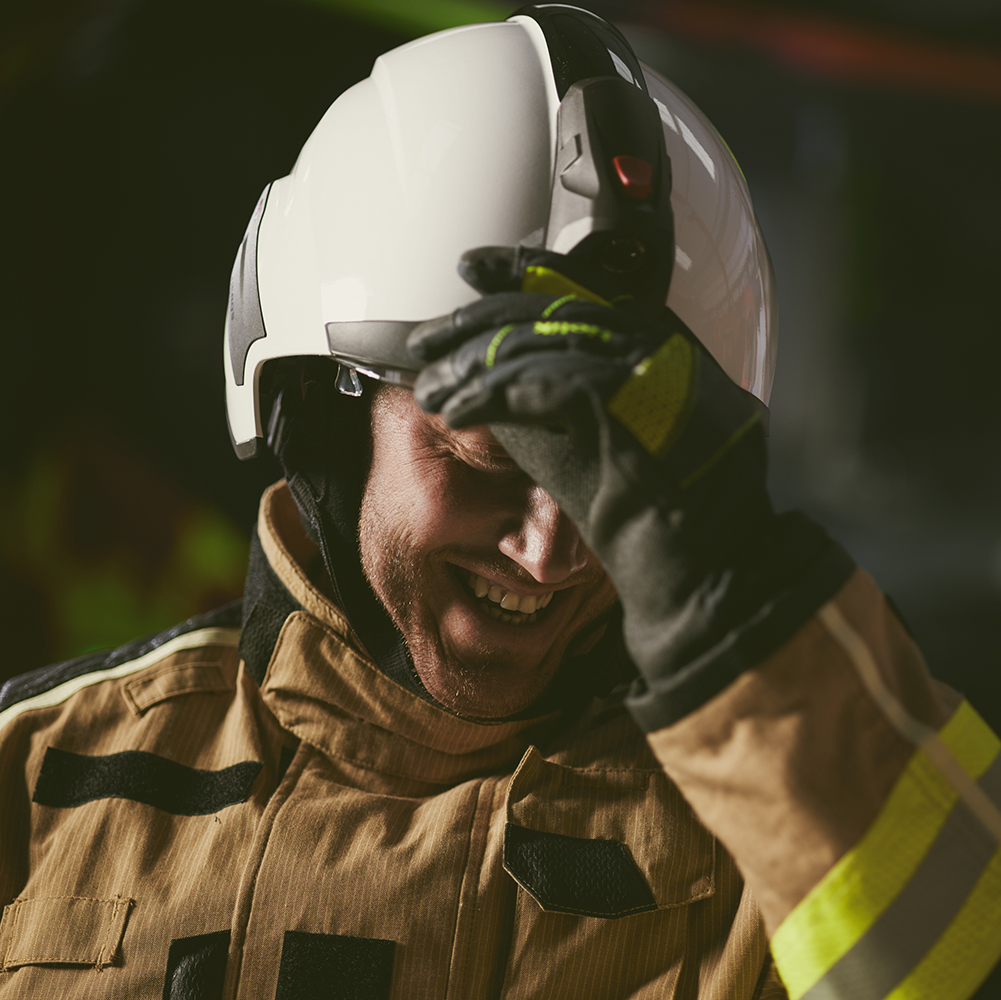From holding your baby to lifting a cuppa to your mouth, from feeling your way through a building dark with smoke to gripping a ladder, there’s no doubt hands are precious – keep them safe with gloves.
There are 17,000 touch receptors and nerve endings in the palm alone, picking up sensations of pressure, movement and vibration. A chemical or fire burn compromises our sense of touch and our ability to fully interpret the world as we travel through it – as well as your ability to be an effective firefighter.
Gloves are your hands’ best friends
It’s important that your crew wears the right gloves for the right situation. For example, increased heat resistance can come at the cost of dexterity. However, if you’re facing a structural fire, you’ll need the heat resistance. Finding the right balance is worth taking the time over as comfort is an important element when it comes to safety – it makes your crew more likely to keep their gloves on their hands, where they belong.
To help you find the balance between the right level of protection and being able to do what you need to do with your hands, washable gloves can offer much more flexibility than traditional leather ones. When leather gloves go through any kind of washing, they can become stiff, making them less comfortable and less flexible, which reduces the wearer’s dexterity.
As a result, firefighters often end up wearing their gloves when they’re dirty instead of handing them in for laundering. This not only makes it harder to do their job, but could pose a risk of exposure to particulates.
How often have you seen a colleague take off their gloves and stow them in a helmet while cleaning up after attending an incident? How often have you done it yourself? Know we know about the risks of particulates – now think about the journey they go on, from the gloves from the inside of the helmet, from the helmet to the firefighter’s skin and from the skin into the bloodstream, where they can have deadly consequences.
Choosing gloves that are designed to be washed and retain their comfort and dexterity can make a huge difference to a firefighter’s willingness to wear them.
When to wash
Gloves should be washed every time the rest of the kit is washed. Don’t throw them in a locker after a shower assuming they’re clean enough for another call-out. Even if they don’t appear to be dirty, they can have hidden risks, contaminants from appliance handles.
How to wash
Washing in hot soapy water might clean away some of the surface muck, but there’s no way of knowing that all contaminants have been cleaned away so all kit should be laundered through a professional laundry service.
Choosing gloves
FlamePro stocks the full range of Holik firefighting gloves, which are designed to be laundered. They have been tested after 40 washes, to ensure they will stand up the toughest of situations.
The Crystal firefighting gloves are all-rounder fabric gloves, designed to be comfortable to wear with additional protection on the back and fingertips for enhances safety. The Hunter fire gloves are cut for comfort, filled with shock absorbers and additional reinforcement. And the Maris gloves are reinforced with hidden protection, offering high protection against radiant heat. All these gloves are washable.
Alongside the structural gloves, FlamePro also stocks a range of Holik rescue gloves, specifically for rescue suits rather than structural suits. The Miwa rescue gloves are strong yet comfortable, flexible and breathable. They have built in cut resistance and elastic wristbands. Read our blog on rescue kit.
No matter what the call out is, the right gloves are available and keeping them clean and well maintained will protect your firefighters. For a whole range of operations, in work and at home, hands are precious – keep them safe with gloves.
If you would like any further advice on what to look for when specifying your firefighting kit don’t hesitate to get in touch or call one of our experts on +44 (0) 1332 341030.
